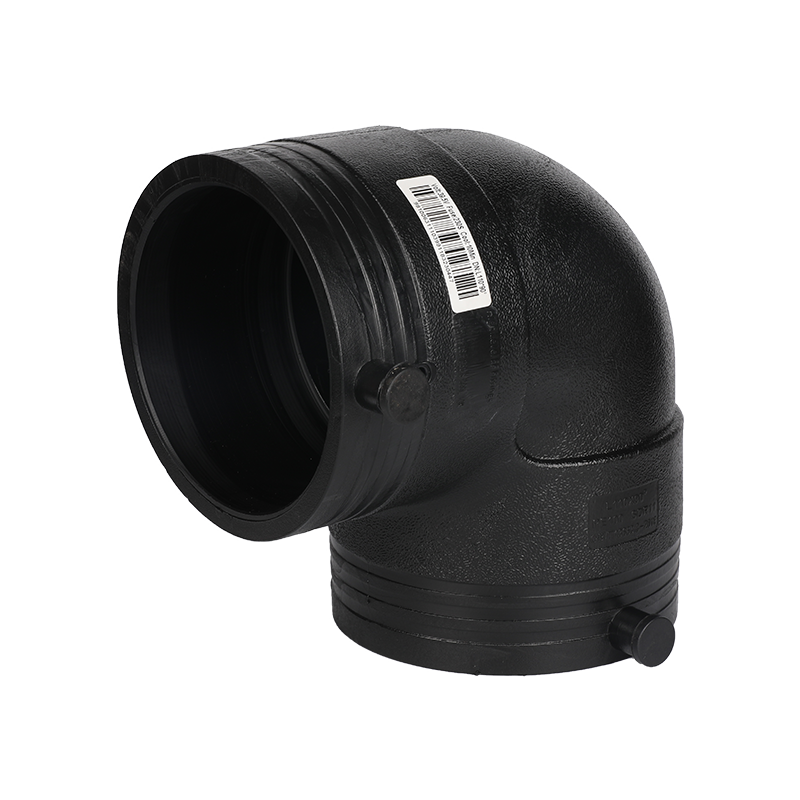HDPE 90 degree elbow butt fusion fitting produced ......
-

AddressZheJiang, China
-

Phone+86-17367068772
-

E-mail[email protected]
In actual engineering applications, how to choose Electrofusion Hdpe Fitting according to different usage requirements?
Choosing the right Electrofusion HDPE fittings for specific engineering applications requires careful consideration of several factors to ensure that the fitting provides optimal performance, durability, and safety for the intended purpose.
For potable water or industrial water transport, choose fittings with NSF certification (National Sanitation Foundation) for drinking water.
If the application involves transporting natural gas or other fuels, the fittings should meet the necessary pressure ratings and compliance standards like ISO 4437 or PE 100.In wastewater systems, consider fittings with resistance to aggressive chemicals and corrosion.Mining, Chemical Transport, and Industrial Use: For highly corrosive or extreme-temperature environments, select materials specifically rated for such purposes, like PE 100-RC (Resistant to Crack).
The material grade of the HDPE is critical to determining its strength, flexibility, and resistance to environmental factors. Common grades are:
For moderate pressure applications, such as water and non-aggressive liquids.Provides higher strength and resistance to cracking, suitable for high-pressure applications like gas distribution, long-term pressure systems, and harsh environments.For applications requiring enhanced resistance to environmental stress cracking and aggressive media.
Fittings come in various sizes, and it is crucial to ensure that the size of the fitting matches the pipes' diameter and the system's requirements. Typical pipe sizes range from 16mm to 1200mm in diameter.
Electrofusion fittings should be compatible with the specific pipe diameter, wall thickness, and material grade to ensure a proper fit during the fusion process.
Different applications may operate at varying temperatures. The temperature resistance of HDPE fittings is crucial for ensuring long-term reliability.
HDPE typically performs well within the range of -40°C to +60°C.

For high-temperature applications (e.g., steam or chemical transport), special HDPE grades with enhanced temperature resistance, like PE 100+ or PE 100-RC, should be used.
Always verify the temperature tolerance based on the operating conditions of the system.
The chemical nature of the fluid being transported also plays a crucial role in choosing the right electrofusion fitting. HDPE is known for its excellent resistance to a wide range of chemicals, but specific applications, such as transporting acids or solvents, may require more specialized grades of HDPE.
PE 100 provides superior chemical resistance and is ideal for chemical transport lines.For particularly aggressive chemicals, such as solvents, or if there is an expected presence of chlorine or other corrosive agents, you may need to verify compatibility with the material specifications.
Electrofusion involves the use of an electric current to heat and melt the polyethylene material, which is then fused together with the pipe. Choosing the right fitting for this process requires ensuring:
Proper electrofusion control box and fusion equipment for the selected fitting and pipe size.The fusion time and temperature must be accurately controlled to ensure a secure, long-lasting joint.Verify that your fusion equipment is capable of handling the fitting's specifications. Some electrofusion fittings also come with integrated chips that store critical information like fusion parameters, which can help ensure a correct and uniform fusion.
The external environment, such as soil conditions (acidic, saline, rocky), temperature fluctuations, and exposure to UV radiation, can influence the choice of fittings.
For underground installations, choose fittings with enhanced resistance to cracking, abrasion, and environmental stress.In above-ground installations, consider fittings with UV stabilizers to prevent degradation from sun exposure.
Finally, balancing the cost and performance is key. Higher-grade materials, such as PE 100, typically have higher initial costs but offer better performance and longer service life, making them more cost-effective in the long term. For low-pressure or temporary installations, PE 80 fittings might offer adequate performance at a lower cost.
By evaluating these factors, you can select the most suitable electrofusion fittings for your project, ensuring safe, durable, and cost-effective installations.
Product Display
-

HDPE 90 degree elbow butt fusion fitting
-

HDPE 45 degree elbow butt fusion fitting
HDPE 45 degree elbow butt fusion fitting produced ......
-

HDPE 22.5 degree elbow butt fusion fitting
HDPE 22.5 degree elbow butt fusion fitting produce......
-

HDPE equal tee butt fusion fittings
HDPE equal tee butt fusion fittings produced by in......
-

HDPE reducing tee butt fusion fitting
HDPE reducing tee butt fusion fittings produced by......
-

HDPE flange adaptor butt fusion fittings
HDPE flange adaptor butt fusion fittings produced ......
-

HDPE reducer butt fusion fitting
HDPE reducer butt fusion fitting produced by injec......
-

HDPE cross butt fusion fittings
HDPE cross butt fusion fittings produced by inject......
-

HDPE end cap butt fusion fitting
Mould injection hdpe end cap butt fusion fittings ......
-

PE/PPR socket fuison welding machine
PE/PPR socket fusion welding machine brief&fea......
-

Double U HDPE ground source pump fitting
Double U HDPE Ground source pump fitting produced ......
-

PIPE clamp HDPE ground source pump fitting
PIPE CLAMP HDPE Ground source pump fitting produce......
-
.jpg?imageView2/2/format/jp2)
Single U HDPE ground source pump fitting
single U HDPE Ground source pump fitting produced ......
-

U socket HDPE Ground source pump fitting
U socket HDPE Ground source pump fitting produced ......
 English
English Español
Español русский
русский عربى
عربى



Contact Us